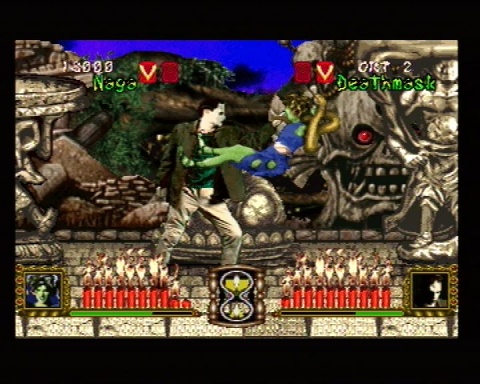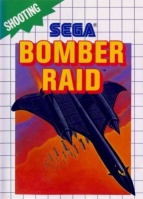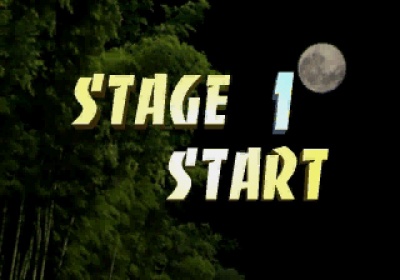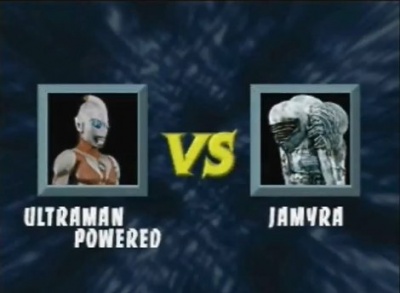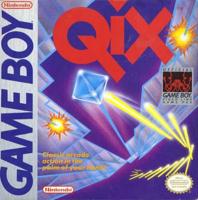Difference between revisions of "Blog:11"
(Created page with "<div align="left"><< newer entries</div> <div align="right">previous entries >></div> ==[[Blog:Eliminate Down (Mega Drive)|Eliminate Down (Mega Driv...") |
|||
| Line 1: | Line 1: | ||
| − | <div align="left">[[ | + | <div align="left">[[Blog:12|<< newer entries]]</div> |
<div align="right">[[Blog:10|previous entries >>]]</div> | <div align="right">[[Blog:10|previous entries >>]]</div> | ||
| Line 32: | Line 32: | ||
{{:Blog:Qix (Game Boy)}} | {{:Blog:Qix (Game Boy)}} | ||
| − | <div align="left">[[ | + | <div align="left">[[Blog:12|<< newer entries]]</div> |
<div align="right">[[Blog:10|previous entries >>]]</div> | <div align="right">[[Blog:10|previous entries >>]]</div> | ||
Latest revision as of 18:59, 27 April 2013
Contents
Eliminate Down (Mega Drive)
CRV 08:55, 27 June 2012 (CDT) [permalink] [comments]
Mega Drive shooters: Thunder Force has its...thunder force. Steel Empire has its steampunk visuals. Eliminate Down has its high prices on eBay.
Do I think it's worth the cost? No, but I say that about every game. It is pretty good, though, impressive even coming from an obscure outfit like Aprinet, which appears to have mostly been a contract developer. Look at them graphics fly...
{{#ev:youtube|WLXlwi6y9V4}}
Over Horizon (FC/NES)
CRV 09:05, 24 June 2012 (CDT) [permalink] [comments]
Hot-B's Over Horizon is a horizontal shooting game with a difference: you can shoot backwards and forwards at will. That's almost enough to justify whatever they're charging on eBay. (It also never made it out Stateside.)
Moreover, everything about the game is solid, from the graphics to the music by Masaharu Iwata to the large bosses. And there are interesting features throughout the stages - for example, you must shoot switches to open doors in stage 2 and maneuver through ice blocks in stage 3.
There's even an edit mode where you can change the power of your weapons and the position of your options. But why is it here? It appears to be a holdover from the beginning of development.
According to former Hot-B employee Yoshinori Satake in an interview with the Japanese magazine Shooting Gameside (English translation here), "Hot-B was in talks with a company that had made an RPG with edit capabilities similar to RPG Maker, and they proposed using their engine to make a shooting game." He was likely referring to Pixel and Dungeon Kid, a Famicom game in which you can edit your own first-person dungeons.
At some point, the focus shifted to doing a normal shooter, and Hot-B eventually took over development. "The stages they had made were about half completed, and the graphics were very weak, and we decided at Hot-B that we needed to fix it up," said Satake. What you see is a vastly overhauled version of the game.
{{#ev:youtube|5Q9cNdHDuY0}}
F1 World Grand Prix (Dreamcast)
CRV 09:01, 11 March 2012 (CDT) [permalink] [comments]
Video System is an interesting case study. Here's a company that was making shooting and mahjong games throughout the '90s, but rather than fade into obscurity right away, it made the transition to 3D games. Didn't seem to help much, shutting down in 2001, but still...
What got me thinking about Video System was one of those 3D games, F1 World Grand Prix for the Dreamcast, which I picked up recently. I actually ended up enjoying it, even though Formula One cars are harder to drive. It looks very good for the time and has all the settings and features that I usually don't bother with.
Even though Japanese people worked on this, everything has a certain British sensibility. That might be because much of the work was apparently done at Video System's British studio. Yes, Video System had a British studio. You didn't know that, did you? To be continued...maybe.
{{#ev:youtube|TWRSRQMRP2c}}
An Afternoon at Arc System Works: Analysis
CRV 07:18, 21 December 2011 (CST) [permalink] [comments]
A writer for French gaming site Gamekult has posted on his blog interviews with Arc System Works president Minoru Kidooka, BlazBlue creator Toshimichi Mori, and Guilty Gear creator Daisuke Ishiwatari. I'm more interested in the new information Kidooka had to share.
According to him, Arc's first published games were Double Dragon for the Master System and Final Lap for the Famicom. He went on to namedrop Falcom.
He also revealed he previously worked for Sega. He was one of the people in charge of creating the SG-1000 and was involved with hardware design until he left in 1987.
Analysis:
- I previously thought Final Lap was by Nova, mostly because of signs in the game (see here and here).
- I seem to remember Final Lap and Rolling Thunder coming up in an Arc code comparison. Perhaps they did Rolling Thunder, too.
- What did Arc do for Falcom?
- I guess Kidooka didn't work for ELS. His name turns up in the ROM of Monaco GP for the SG-1000, which shares a font and came up in a code comparison with several other games including Yamato. (Yamato contains strings with ELS's name, address, and phone number.)
(Special thanks to Bock for bringing this to my attention and Youloute for bringing it to his.)
Crush Roller/Make Trax (Arcade)
CRV 08:48, 19 December 2011 (CST) [permalink] [comments]
Crush Roller (released Stateside by Williams as Make Trax) is one of a number of maze games that were released in the wake of Pac-Man. But instead of gobbling up dots, you must try to paint the entire maze with your paintbrush.
And instead of ghosts, sinister goldfish will try to snuff you out. Run over them with the rollers situated in the maze for points and temporary relief.
That's not all - cats, birds, mice, tires, and invisible men will leave tracks in the paint. Catch them before they ruin all your hard work.
Despite what you might read on the Internet, Crush Roller was not originally by a South Korean company called Kural Samno. It was actually released in Japan by Kural Electric (or "Craul Denshi") and developed by ADK, then known as Alpha Denshi.
US copyright records back up Alpha's involvement. Former Alpha programmer Masashi Yamaguchi worked on this and other early Alpha games such as Champion Baseball and the Crush followup Korosuke Roller, in which you control a squid. He was interviewed in Terebi Game Kitan.
{{#ev:youtube|hTawxqAPLLc}}
Remake
If that's too old-fashioned for you, you might be more interested in the Neo Geo Pocket Color version from 1999. It features updated graphics and sound as well as time trial and versus modes. You can also collect the pesky critters that make tracks.
{{#ev:youtube|ySBNqFhop0E}}
Battle Monsters (Saturn)
CRV 12:47, 31 October 2011 (CDT) [permalink] [comments]
Deathmask. Naga. Headless Harn. Fend off these and other fearsome freaks as you journey through the pits of Hell in this fighting game starring digitized combatants.
Generally panned at its release, Battle Monsters for the Sega Saturn does have one interesting feature: big, multi-platformed stages. There's even a stage in which you can knock your opponent into a man-eating plant.
The Mortal Kombat influence is obvious, but there's not as much blood and gore. "Fatalities" (or really any kind of big, showy finishing moves) might have actually been fitting here.
Otherwise, this is a decent, playable game, but fighting game afficionados will only want this for laughs. Pick it up cheap.
Development. What do Battle Monsters and Atomic Robo-Kid have in common? They're both games you've never heard of? Perhaps, but they were also made by some of the same people. Developer Scarab was started by former UPL employees.
Scarab developed another digitized fighting game, Survival Arts (arcade), and another horror-themed fighting game, Killing Zone (PlayStation), this time using 3D graphics.
Happy 5th Anniversary!
CRV 15:53, 26 August 2011 (CDT) [permalink] [comments]
Five years ago today, GDRI, with some space from SMS Power, officially went online.
It's been fun digging into the world of contract developers and video game history in general. There have been a lot of surprises, and I hope there are more (good) surprises to come.
- Thanks to Dimitri, Idrougge, and all the other contributors over the years that have made this site what it is.
- Thanks to Bock and Maxim of SMS Power for their support.
- Thanks to RevQuixo for the e-mail address.
- Thanks to all the interviewees that have shared their stories and helpful information.
As a special gift, here's an interview with Tsunetomo Sugawara of Hertz (Psycho World, Out Run 2019, Vay). Please enjoy. (It only took over two years to post the rest!)
Bomber Raid (Master System)
CRV 15:19, 26 August 2011 (CDT) [permalink] [comments]
From the back of the box: "Who has Mach-6 speed, helabad weapons, and a love for wastin' dweebs in tanks? You do."
In the shooter Bomber Raid (the last Mark III/Master System game released in Japan), you fly a biplane with not much firepower to fight off the nameless enemy. Good thing there's powerups along the way that boost your shot, speed up your plane, and add squadron planes. If you can survive long enough, you'll be shooting out firebirds that cut through enemy bullets. "Helabad" indeed.
Though it might not be as good as Compile's offerings, Master System shooting fans should take a look.
{{#ev:youtube|fItPiRtajJ8}}
Development. While it looks a lot like Capcom's 1943, Bomber Raid actually started out as a conversion of the Sega coin-op Sonic Boom, according to someone who worked on the game. Former Activision producer Tom Sloper recalled working with Sega R&D2 when localizing the game for a Stateside release, but development was actually handled by frequent Sega contractor Sanritsu (Bank Panic [AC], Appoooh [AC]).
Hidden title screen. To see a title screen featuring a working game title, hold down+left on controller one and up+right+1+2 on controller two on startup, or use Pro Action Replay code 00C116FF. Is it better than the final version? You be the judge.
{{#ev:youtube|sl2GHw5KkSE}}
Post updated April 20, 2019
Shinobi Powered
CRV 08:45, 31 July 2011 (CDT) [permalink] [comments]
Sure, seeing Shinobi Legions and Shinobi X boxes in the Tose Corporate Guide 2001 confirms Tose's involvement with the Sega Saturn Shinobi game, but more evidence don't hurt none - especially since there are no game staff credits, just the cutscene cast and crew (which could also be evidence). Presenting shared fonts...
Shin Shinobi Den (新・忍伝)/Shinobi Legions/Shinobi X (Saturn)
Ultraman Powered (3DO fighting game developed by Tose)
Note the other visual similarities between the two, most obviously the use of digitized graphics. Is it possible that Ultraman Powered, released first, laid the foundation for Saturn Shinobi? You be the judge.
(And in case you missed it, please read GDRI's interview with Daniel Auld, who worked on Ultraman Powered at Tose.)
{{#ev:youtube|xArxMSzwoU4}}
{{#ev:youtube|-KmCanJ9w7I}}
Qix (Game Boy)
CRV 08:48, 13 July 2011 (CDT) [permalink] [comments]
Your objective is to draw lines called Stix to claim as much of the playfield as possible. Just watch out for the Sparx, the Fuse, and the titular, unpredictable Qix (pronounced "kicks").
Did you know the original arcade version of Qix was developed in America, designed by husband and wife Randy and Sandy Pfeiffer? Mr. Pfeiffer might even acknowledge it was his if you ask nicely. (Please don't bother him.)
Numerous sequels, updates, ports, and clones have followed. And now, the Game Boy version is available through the 3DS Virtual Console.
First released in 1990, Game Boy Qix is a straightforward conversion of the original. There is, however, the added possibility of seeing Mario in a sombrero or working as a matador after beating the 1-player game, depending on your score.
Thanks to US copyright records, we now know that Minakuchi Engineering was responsible for Game Boy Qix. The Canadian copyright record even lists people who worked on it who would have otherwise gone uncredited. Among them is composer Toru Osada, who also worked on the shooter Solar Striker. (Don't bother him, either.)
{{#ev:youtube|7mds4FtZqfM}}
Commercial featuring a young Brian Austin Green {{#ev:youtube|H-7Rz7h3PcI}}

